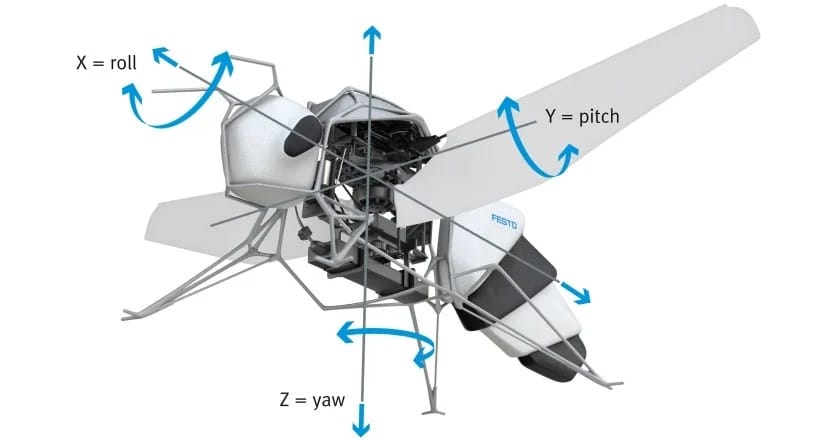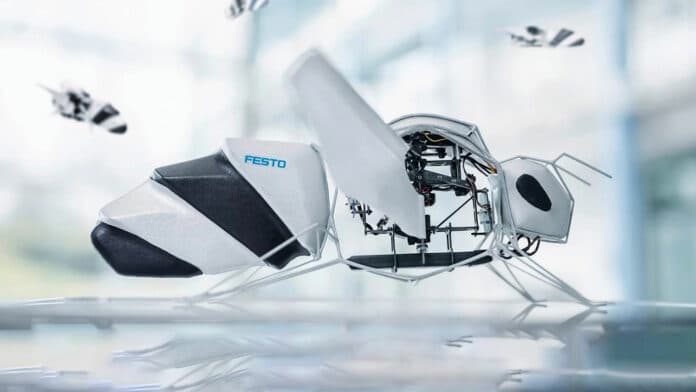Festo’s Bionic Learning Network never ceases to amaze with their cutting-edge technology. Their latest creation, the autonomous BionicBee, is truly a marvel, not only being the smallest autonomous flying bot but also the first capable of swarming.
Inspired by nature, the BionicBee showcases the incredible potential of biomimicry in robotics. Every year, Festo brings its latest innovations to Hannover Messe, and its nature-inspired bots never fail to captivate audiences. From the majestic flying penguins to the cooperative worker ants, each design is a testament to the power of innovation. And now, with the BionicBee swarm, Festo has once again pushed the boundaries of what’s possible in robotics.

The BionicBee is the first flying object that the team has developed, and it can fly completely autonomously in large numbers and as part of a swarm. Despite its small size, it boasts an impressive wingspan of 24 centimeters and a weight of just 34 grams.
Using generative design software, the developers were able to optimize the structure of the bee by using as little material as possible while maintaining stability. This lightweight construction is critical for maneuverability and flight duration.
In addition to its efficient design, the BionicBee is packed with features. Its compact body houses the wing mechanism, communication technology, and control components, all in a tight installation space.

With a brushless motor, three servo motors, a battery, a gear unit, and various PCBs, this little bee has everything it needs to fly. Thanks to the intelligent interaction between the motors and mechanics, the wing beat frequency can be adjusted for precise maneuvering.
BionicBees are pretty advanced and can navigate through a room with the help of ultra-wideband anchors. They were developed using generative design, which is all about creating lightweight structures with the least possible materials and maximum stability.
The BionicBees are equipped with a brushless motor, three servos, a battery, a gear unit, comms technology, and control components crammed into their small frames. Their wings beat at an incredible rate of 15 to 20 hertz, controlled by servos that adjust the wing geometry for lift and direction.
Each drone is assembled by hand, with the slightest deviation in build affecting its performance. But fear not, the BionicBees have an auto-calibration feature that corrects any hardware irregularities during a brief test flight, ensuring that all bees in the swarm are identical, and therefore safe. Festo launched the swarm flight of the BionicBees at Hannover Messe 2024 last week.
